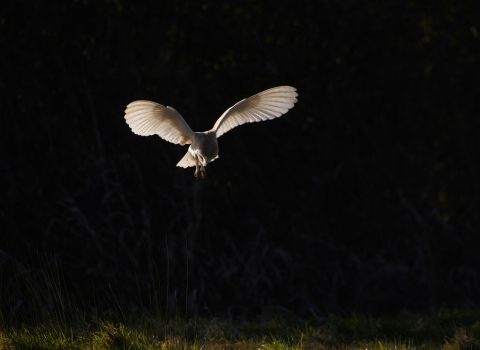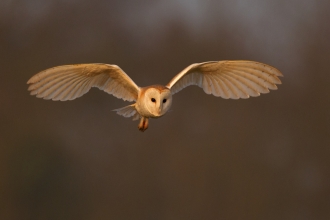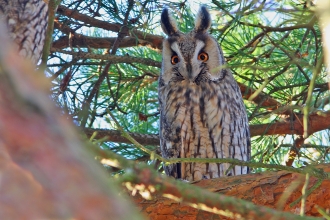Barn owls
The barn owl is a distinctive bird. Famously hunting on silent wings, they swoop down on their prey unannounced; a soft fringe along the outside of their flight feathers absorbing the noise of their flight. Undisturbed by the sound of their wings flapping, they listen out for the rustling of small mammals in the grass. If you’ve never seen a barn owl before, then winter can be a great time of year to look, as they often extend their hunting hours into daylight to find the extra food they need to get them through the colder months.
Find barn owls
Although not numerous, barn owls can be seen across Northern Ireland, particularly where farmers and landowners manage grassland edges and field boundaries to benefit small mammals and other prey, and have put up nest boxes. County Down and the Lough Neagh basin has the highest densities of barn owl sightings in the country, so it is a good place to look for these elusive birds as they hunt alongside ditches, tracks and roads as night falls and before sunrise.
How to do it
Barn owls feed almost entirely on small mammals such as pygmy shrew, mice and rats, so your best chance of seeing this silent hunter is in areas of rough grassland. Like many owls, barn owls find it harder to hunt in windy and wet conditions, so still, dry evenings are best to try to spot them. Scan the sheltered side of fields in the lea of hedgerows and along fence posts for your best chances. If a barn owl is hunting nearby, you may be able to attract it closer by making a squeaking noise by kissing the back of your hand - the owl may come over to see what is making the noise. Don't forget to listen out too - barn owls don't hoot; they screech, hence its Irish name: an scréachóg reilige – the screech owl.






